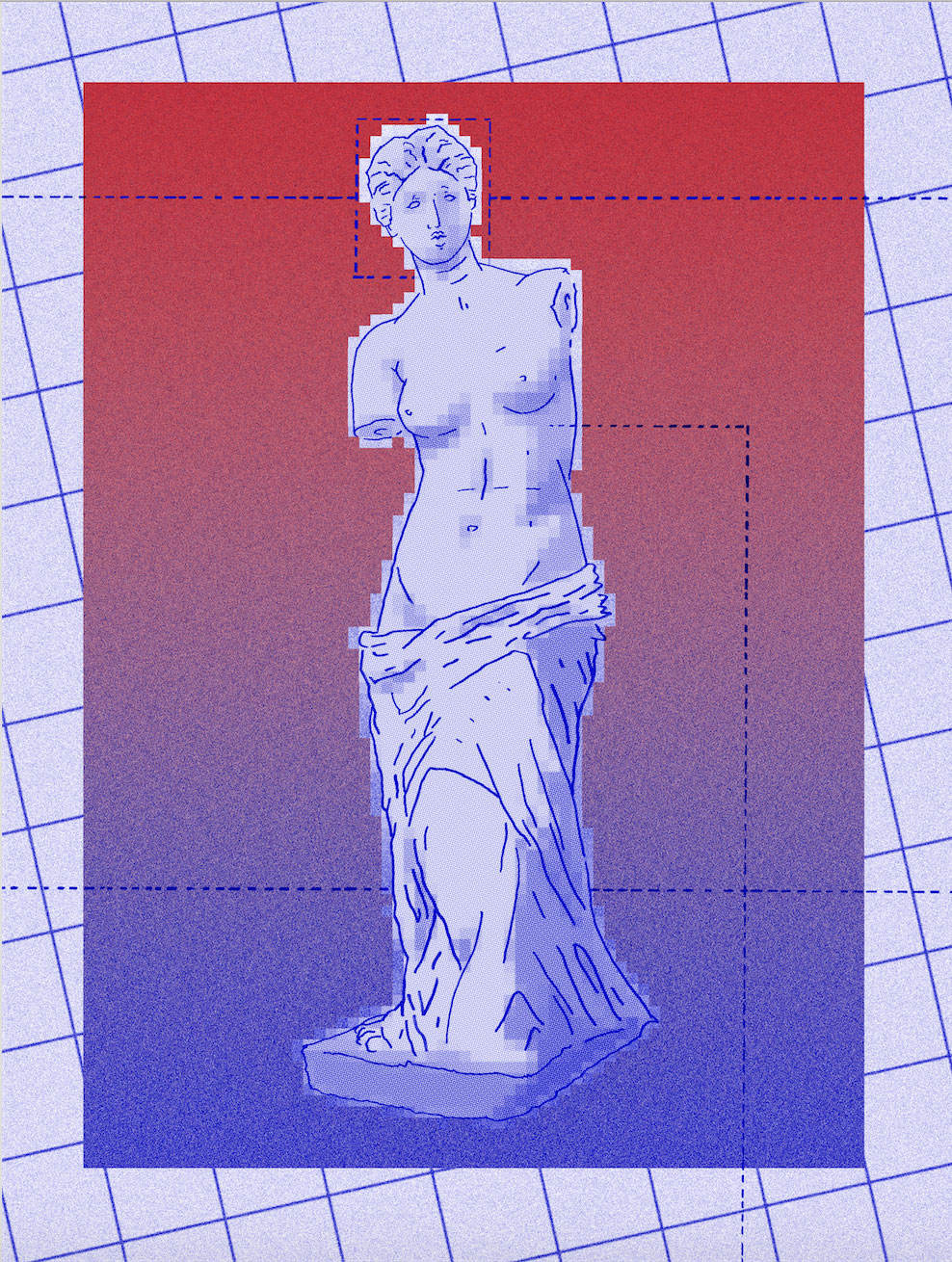Tomorrow's Museums Are Upping Their Game
We talk to the world's most exciting curators about what tomorrow's museums will look like

In the past, the idea of a museum was pretty simple. It was a place you’d go to look at paintings, sculpture, performances or films. Today, you’re as likely to look at art on your smartphone – and collectors are increasingly likely to invest in digital artworks. Millennials want art that speaks their language and feeds into their interests. This means museum directors are scratching their heads and asking how they can reinvent the classic institution.
This doesn’t just mean changing the logo and launching a new website. It’s a total rebrand of how museums communicate with their audience, choose their metric of success, curate their exhibitions and treat their physical spaces. There’s more to it than just throwing a few VR headsets into an installation. This is about the total integration of art and technology, as well the future of museums.
Even the gift shop is getting a refit. The inventory of the Intangibles store at the Walker Art Center is not limited to physical objects; it also offers art that takes no physical form, like a ringtone by musician Nico Muhly, or Snapchat photography by Alec Soth – a move that blurs the line between art, commerce, and disruptive technology. This points to a future where museums are far more reactive, trading in digital goods that relate to their exhibitions, and giving the booming audience for contemporary art a chance to take away their own original piece, to be utilised on a smartphone, traded for bitcoin or used to hack an existing app.
We’re aware that some of what we do just might not work. That’s the nature of experimentation, a risk you have to take. Museum curators are also thinking about new ways to activate collections for an audience of digital natives. At times the results are pretty dry; an iPad embedded in a wall can hardly be called a real innovation. But some challenges, like the IK Prize offered by Tate, with a sweet £60,000 development fund and a £10,000 prize, have sparked some boundary-pushing ideas. Sensorium, this year’s winning entry, from design studio Flying Object, is a proposal to taste, feel and smell Tate’s paintings. It features everything from the deployment of hundreds of ultrasound speakers projecting soundwaves that you can “touch” to 360° sound recordings and rooms packed with emotive smells.
“The first job was to build a team with expertise in the different senses, as well as the scientific understanding of how they come together to form our perception of the world,” explains Flying Object founder Tom Pursey. “Since then, we’ve been working with that team to explore different ways in which sensory stimulation can augment the gallery experience.” By employing a whole range of senses, Flying Object hopes to bring Tate’s collection to a wider audience and forge connections that go beyond the purely visual.
It’s a radical project and Pursey readily admits it’s only at a beta testing stage. “Hopefully elements of what we do will inspire curators and exhibitors to explore similar areas,” he says, adding that visitors’ reactions will be monitored to gauge Sensorium’s success. “We’re aware that some of what we do just might not work. That’s the nature of experimentation, a risk you have to take.”
Tate isn’t the only place prototyping new concepts. In Antwerp, digital agency Prophets has created a custom app for the city’s Rubens House museum, using Apple’s iBeacon technology. The low-energy Bluetooth beacons send bite-size bits of media to visitors’ smartphones as they pass the artworks, and the Rubens House trial allows people to unlock contextual photographs, see various layers of a canvas or even tailor their journey along certain themes using GPS. The governing body of Antwerp’s museums hopes to roll the concept out across the city, and further develop the software to create bespoke interactive experiences for specific audiences.
Access is an important issue for museums. Getting visitors through the doors is key, but museums also need to be able to engage with diverse audiences that aren’t necessarily in the same city or country. For institutions like Rhizome, this isn’t as much of an issue as a core strategy. Visit the Rhizome.org homepage and you’re as likely to land on an artwork as an events listing or thought piece. The footloose organisation, which has no set physical space, has been digital-first since 1996, giving it an edge over the older museums now slowly waking up to the digital revolution.
“We’re not online or offline,” says Rhizome’s assistant director Zachary Kaplan of its flexible approach to exhibiting and curating art. “We have a set term programme, some of which is fully online, some of which could take place in a room or be mediated on Twitter.” When Rhizome wants to run an event in a physical space it can take advantage of its affiliation with the New Museum. When it wants to collaborate with Instagram it can do it via that platform. If it wants to respond to a specific issue, it can host a mini site.
This open, project-by-project approach is only possible because of Rhizome’s dedication to digital-first, and its understanding of the nuances of curating digital programmes. Its ArtBase online archive preserves not only the works themselves, but also the programmes and software used to create them, using a process called emulation. This involves writing new software that mimics the exact experience of using the software used to create the original.
A great example is Rhizome’s online emulation of Theresa Duncan’s ground-breaking 1990s video-game series. Its team not only took the original CD-ROMs on which Duncan wrote the interactive stories, but recreated the Mac OS software environment of the time, right down to the startup page and sticky keys. This, explains Kaplan, is vital for recreating the specific nature of the original. Discovering what Photoshop 1.0 was like to work with using Windows 95 is very different to trying it out on Windows 10.
The audience for all museums has exploded, we just need to figure out how to crack that question of metrics. To some it might seem as though curating this sort of art is simple copy-and-paste job. In fact, code is fragile, and not all software is compatible. Translating a Nintendo 64 cartridge to a HTML website can be a nightmare. Even super-curator, author and co-director of the Serpentine galleries Hans-Ulrich Obrist bemoans the fact that in some ways today he’s completely illiterate. “Every day I think ‘I’ve got to learn to program’,” he says. “I do hope that we find time in the years to come to learn to program because it’s only then that you can really understand the mechanics of the work.”
The raw code of a project could itself, in the future, become part of an exhibition. But for now, the task for curators is helping those of us without a strong grip of the underlying technology understand the nuances of contemporary art. “Our aim is to do projects which have the same ambition and the same outreach as the projects we do in our physical space,” says Obrist. “Right now artists are creating extraordinary work in the digital realm. It’s a critical moment that’s very urgent for museums to address.”
Digital exhibitions, says Obrist, require the same commitment and professional curation as exhibitions in the physical space. Undoubtedly, some such exhibitions will go beyond a single website. In fact, it looks as though the art galleries of the future could become hosting spaces for projects that cross physical networks, crowds and augmented virtual spaces, or incorporate 3D printing. The expert role of the curator could be as much about measuring the demographics of an audience, or its emotional reaction to an experience, or an artist’s global reach, as about commissioning or “installing” an exhibition.
Various studies suggest that the average time viewers spend in front of an artwork is somewhere around 15 seconds. “There is something I think even more important than that,” comments Obrist. “It’s the idea that, as long as there’s electricity and a computer screen, a digital artwork can exist for infinity and there can be tens of millions of people who see an exhibition – because in the future, it will never actually stop.” Illustration Tom Deason


